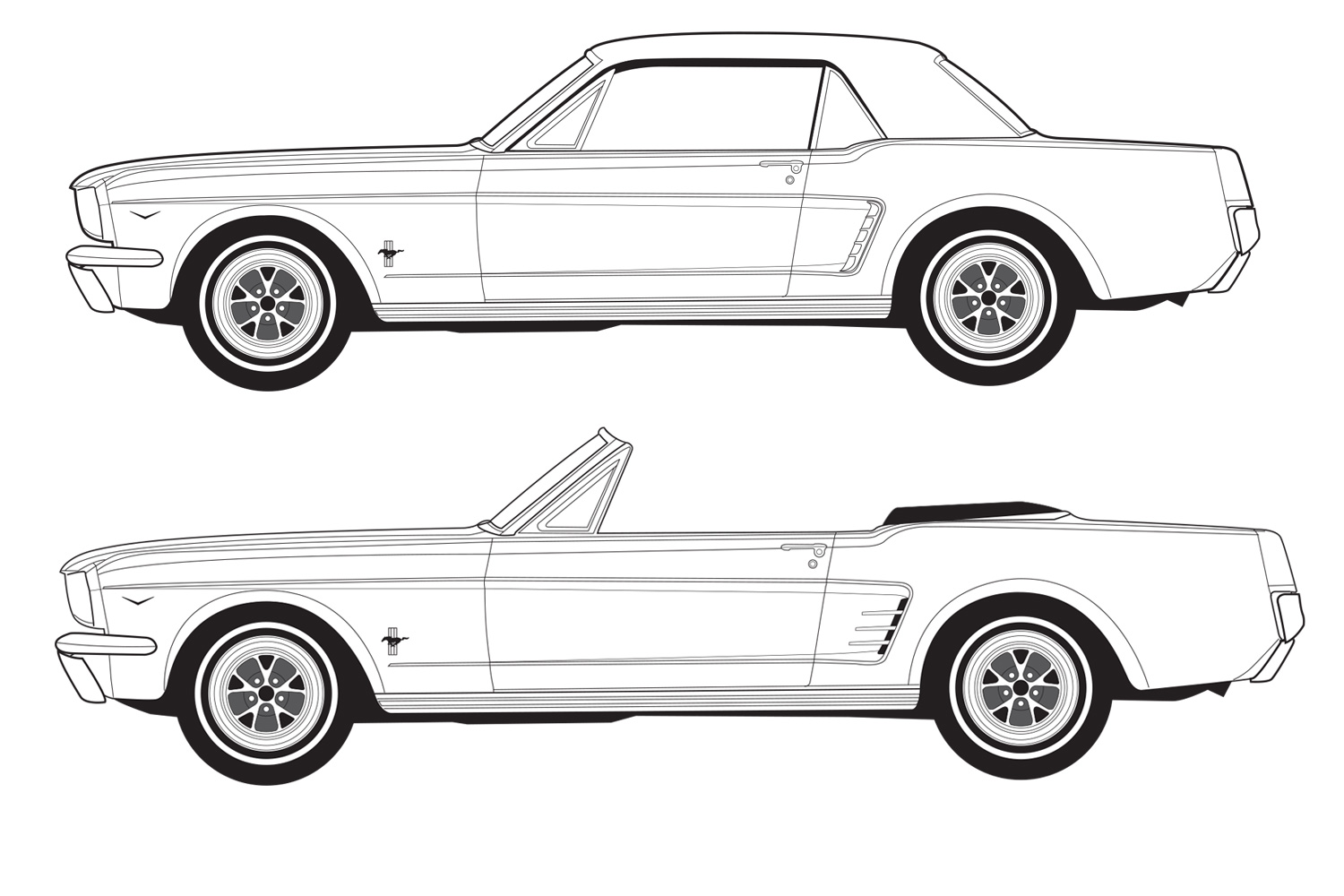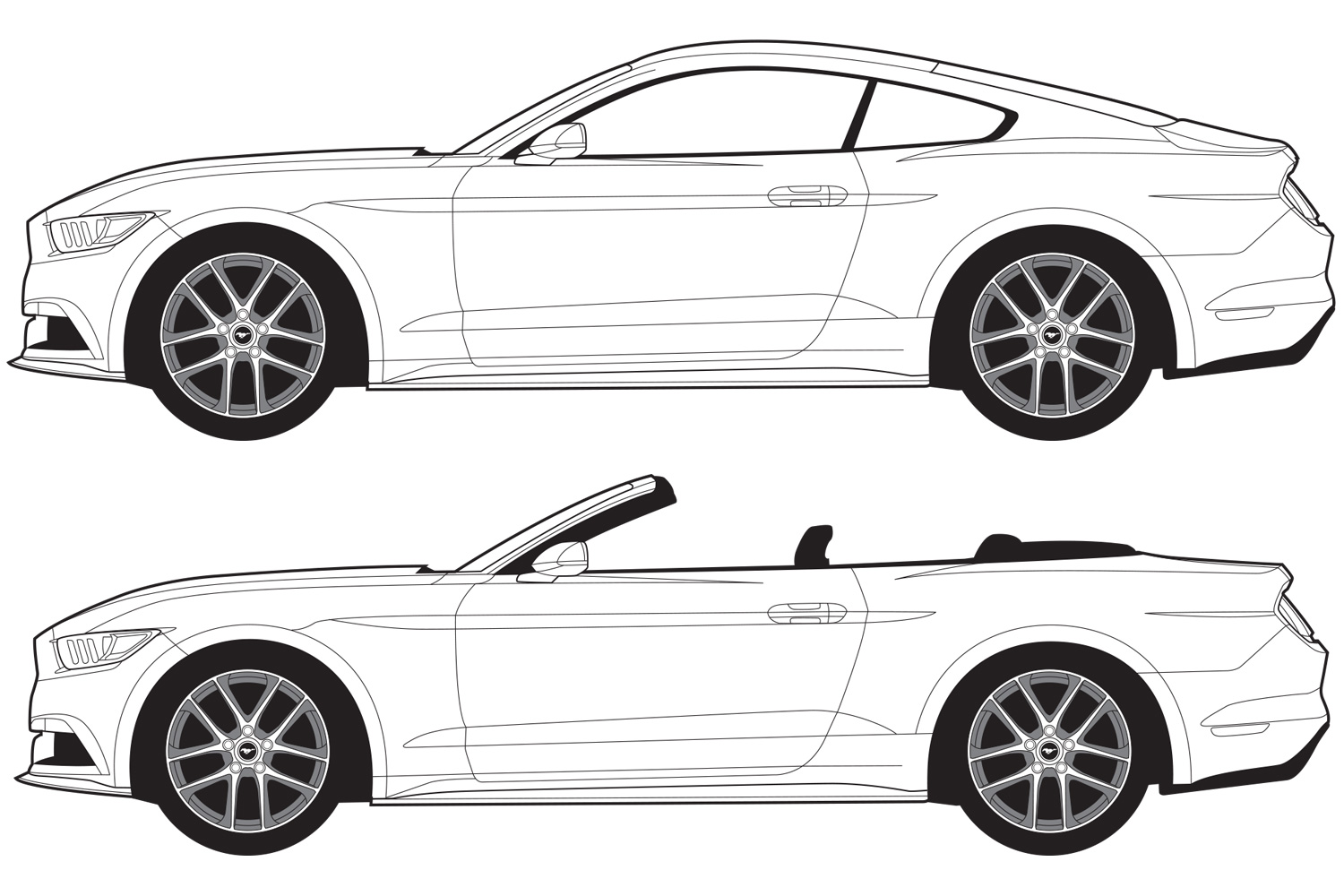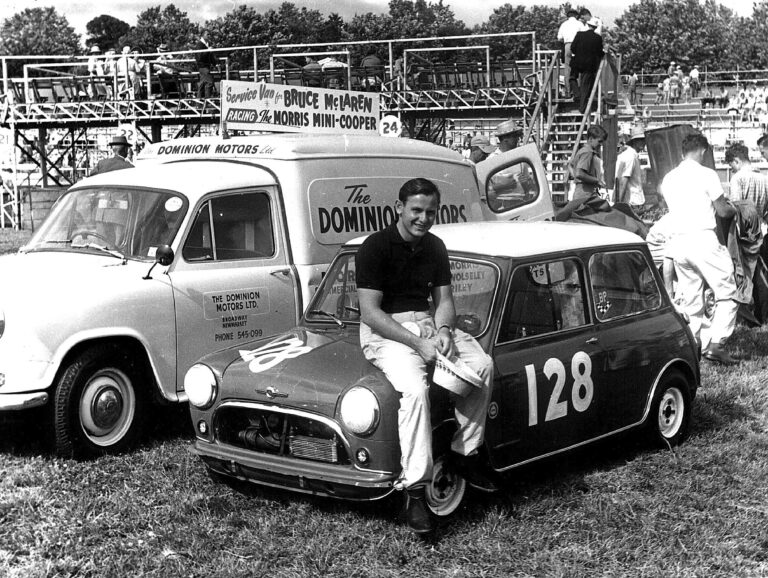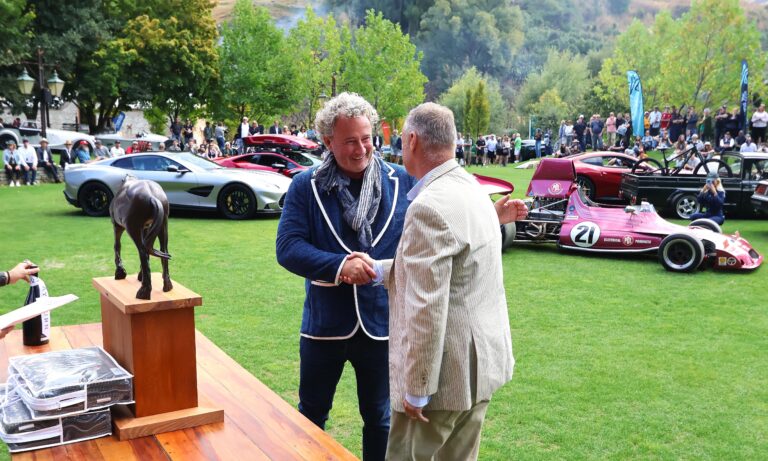1964–1966
On March 9, 1964, the very first Mustang rolled off Ford’s production line — and by the time of the car’s official on-sale date, April 17, some 8160 examples had been built. Along with the first Mustang, which now resides at the Henry Ford Museum in Dearborn, these cars forged a motoring legend that lives on right to the present day.

1964–1966
Little did Ford know when it released the 1964 Mustang to the public on April 17, 1964 at the New York World’s Fair that it would become one of the world’s most iconic cars. In fact, such was the overwhelming response to the new Ford Mustang, Ford dealerships across the US were inundated with more than 4 million visitors who placed an unprecedented 22,000 confirmed orders on the first day of release. Mustangs produced during the first six months of production were also referred to as ‘1964½’ models.
1967–1968

1967–1968
This was the year of the Mustang’s first redesign, and a plethora of changes was made, including a restyled body, front grille, and non-functional side scoops. The 1967–’68 Mustangs were still available in coupé and convertible options, as well as a completely new-look fastback that extended to the rear, giving a sportier look and feel. But 1967 was the only year for the ‘GTA’ (GT with automatic transmission), which was available in coupé, fastback, or convertible options with different engine sizes.
1969–1970

1969–1970
The 1969–’70 Mustangs had a whole new look and feel. The body became larger with more aggressive styling cues, including, for the first time, dual headlights. As well as the standard coupé, convertible, and ‘SportsRoof’ (replacing the ‘fastback’ name), new models were introduced such as the Mach 1, Boss 302, and Grande. Larger engines were also available, including the 351ci (5752cc) and 390ci (6391cc) V8s. As well, Ford released the most prized Mustang of all among collectors — the 7030cc Boss 429 (i.e. 429ci), built primarily to satisfy Nascar regulations. Minor cosmetic changes crept in for 1970 — most notably, the reintroduction of dual headlights and the loss of the side scoop from the Mach 1.
1971–1973

1971–1973
Dubbed the ‘Big Mustang’, the 1971 Mustang came in for another major restyle. Longer and wider, with a longer wheelbase than the ’70 Mustang, the ’71 model was certainly a far cry from the light, airy, and sporty look that had made the earlier Mustangs so appealing. While basically a carry-over from 1971, the ’72 Mustang saw only minor cosmetic changes to the model line-up, and 1973, with the car receiving further minor changes, was the last year of production for the fourth-generation Mustang. The 1973 Mustang’s power ratings dropped significantly as US emissions regulations began to strangle output.
1974–1978

1974–1978
Ford was well aware by the early ’70s that the pony-car market created by the popular Mustang was on a slippery downward slope, thanks to emission regulations and the fact that the baby-boomer market was looking for smaller, more fuel-efficient, and more compact cars. The Falcon componentry that had underpinned the Mustang since the start was now gone from the ’74 model Mustang, or Mustang II, which was based on the much smaller Pinto and ended up being an undersized, underpowered, poor-handling, and poorly-built car that proved unpopular. On a more positive note, the Mustang II received some of the traditional styling cues, including scalloped side panels, three-piece tail lights, and the Running Horse in the grille. There weren’t too many changes made to the Mustang II between ’74 and ’78, apart from subtle design alterations and engine options. In 1978, the radical-looking, mildly performing King Cobra made its debut.
1979–1993

1979–1993
With a completely new platform originally designed for the Fairmont, the new Fox-body Mustang was longer, including the wheelbase, than the previous model, yet weight had been trimmed by almost 100kg. There was no convertible Mustang available (until 1983) and choice was limited to a three-door hatchback or two-door coupé complete with optional upgraded Ghia trim. Another milestone for the Ford Mustang — it was named official pace car for the Indianapolis 500 for the second time (the first time had been in 1964). Minor styling changes were made for the first few years, and, in 1982, the Special Service Mustangs were offered. The first facelift came in 1987, which included aerodynamic headlights, a GT ground-effects kit, and tail-light covers. In an attempt to aid poor sales, Ford offered limited-edition models for 1992 and ’93.
1994–1998

1994–1998
Despite still sitting on the Fox platform, the new ’94 Mustang debuted with a completely new body, the fourth major Mustang redesign. The new Mustang was slightly longer and boasted styling cues from the original ’64 Mustang as well as the return of the grille pony following a 16-year absence. For the third time, the ’94 Mustang convertible was chosen to pace the Indianapolis 500. Only minor styling changes were made to ’95 through ’98 models.
1999–2004

1999–2004
To mark the 35th anniversary of the Mustang, Ford gave it a brand new look and feel. While still based on the Fox platform, the new Mustang received crisper, sharper lines incorporating slim halogen headlights and healthy three-inch-diameter dual exhausts. The Cobra returned in 2001, and a special edition was designed to remind would-be punters of the famous movie Bullitt, starring Steve McQueen driving a ’68 Mustang of the same name. The exciting news for ’93 was the return of the ‘Mach 1’ name, as well as a special limited-edition GT to celebrate 100 years of Ford.
2005–2010

2005–2010
Ford’s latest fully redesigned Mustang, based on the DC2 platform, was an immediate sales success story thanks to exterior design features inspired by the ’60s Mustangs, with journalists naming the new car an “instant classic”. The California Special returned in 2007. By then, the Ford Mustang had broken virtually every sales record, with about half of all sports cars sold in the US being Mustangs.
2010–present

2010–present
Still based on the same DC2 platform, the 2010 Mustang was basically a revised version of the previous model. By 2012, Ford’s new Duratec 3.7-litre DOHC V6 had replaced the aging 4.0-litre unit used since 2005, and, in the same year, Ford re-introduced the Cobra Jet, albeit in a strictly limited run of 50. The car was not street legal but, for all intents and purposes, still classified a production car.
The 2013-model Mustang received only minor cosmetic upgrades, including a remodelled front bumper; a larger, more aggressively styled grille; and high-intensity-discharge headlights as standard.
Mustang line drawings courtesy Hive Posters


